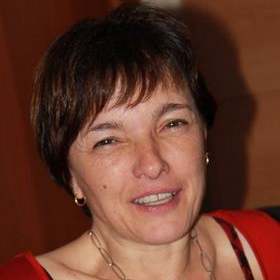Earth Observation and Citizen Contributed Data for Urban Sustainability
A special issue of Remote Sensing (ISSN 2072-4292). This special issue belongs to the section "Engineering Remote Sensing".
Deadline for manuscript submissions: 15 September 2024 | Viewed by 11006
Special Issue Editors
Interests: geospatial web; geodata science; citizen science; open science; open data; open geospatial software; geospatial artificial intelligence
Special Issues, Collections and Topics in MDPI journals
Interests: multi-source data fusion; analysis of big data; spatial data deep learning
Special Issues, Collections and Topics in MDPI journals
Special Issue Information
Dear Colleagues,
As the world continues to urbanize, urban sustainability has become the theme of our time. Remote sensing and citizen-contributed data provide critical insight to monitor and achieve Sustainable Development Goals (SDGs). Remote sensing provides essential approaches to monitoring urban evolution at spatial and temporal scales for our understanding of city changes and their influence on natural resources and environmental systems. Coupled with the traditional methods and remote sensing techniques, citizen science has a great potential to provide timely, reliable and comprehensive data for collaborative action. Vast numbers of urban sensors could make cities smarter. The availability of high-performance computing platforms and the development of artificial intelligence (AI) provide new opportunities for the integration of multi-sources information and large-volume data analysis.
This Special Issue invites manuscripts that present new developments and methodologies, practices, and applications related to urban sustainability issues with remote sensing (e.g., high-resolution, multi-spectral, hyperspectral, LiDAR, thermal) and citizen-contributed data (e.g., OSM, social media, file sharing, Internet of Things). Recent advancements in multi-source data integration, multi-scale approaches, big data analysis, data mining, machine learning or studies focused on urban sustainability are welcome. Original research articles, reviews, letters, technical notes, and highlight articles may address, but are not limited to, the following topics:
- Remote sensing image processing;
- Citizen contributed data analysis;
- Multi-source data integration;
- Multi-scale approaches;
- Big data analysis and data mining;
- Machine learning and Earth Observation (citizen contributed data included);
- Internet of Things in an urban context;
- Digital twin cities;
- Geospatial science and techniques for urban sustainability.
Prof. Dr. Maria Antonia Brovelli
Dr. Qi Zhou
Dr. Andong Ma
Guest Editors
Manuscript Submission Information
Manuscripts should be submitted online at www.mdpi.com by registering and logging in to this website. Once you are registered, click here to go to the submission form. Manuscripts can be submitted until the deadline. All submissions that pass pre-check are peer-reviewed. Accepted papers will be published continuously in the journal (as soon as accepted) and will be listed together on the special issue website. Research articles, review articles as well as short communications are invited. For planned papers, a title and short abstract (about 100 words) can be sent to the Editorial Office for announcement on this website.
Submitted manuscripts should not have been published previously, nor be under consideration for publication elsewhere (except conference proceedings papers). All manuscripts are thoroughly refereed through a single-blind peer-review process. A guide for authors and other relevant information for submission of manuscripts is available on the Instructions for Authors page. Remote Sensing is an international peer-reviewed open access semimonthly journal published by MDPI.
Please visit the Instructions for Authors page before submitting a manuscript. The Article Processing Charge (APC) for publication in this open access journal is 2700 CHF (Swiss Francs). Submitted papers should be well formatted and use good English. Authors may use MDPI's English editing service prior to publication or during author revisions.
Keywords
- Earth observation
- citizen science
- urban sustainability
- SDG 11
- geomatics and Earth observation machine learning (GEOML)
- digital twin cities







